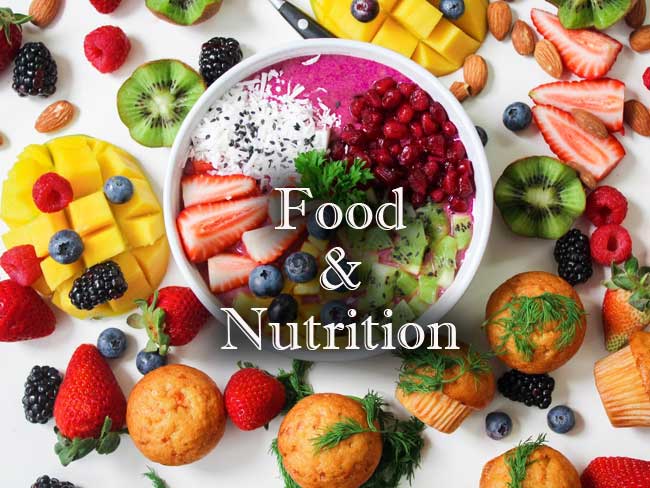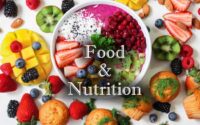Food and Nutrition Difficult Question Papers
In this Article, we have provided the Food and Nutrition Difficult Question Papers along with Solutions. So, the interested candidates who applied for jobs in Food and Nutrition can download Food and Nutrition Hardest Question Papers for free of cost. Get all the Food and Nutrition Difficult Question Papers with just one click.

Click on the enclosed links below to download the Food and Nutrition Difficult Question Papers. Check the Last five years Food and Nutrition Difficult Question Papers to get a clear idea of the exam pattern. Along with Food and Nutrition Difficult Question Papers, it’s better to refer Food and Nutrition Syllabus & Exam Pattern before starting preparation. So, click on link to check and download Food and Nutrition Hard Question Papers PDF.
Difficult Question Papers on Food and Nutrition
1. Which of the following is a Sulphur containing amino acid ?
(1) Lysime
(2) Methionine
(3) Phenyl alanine
(4) Valine
2. Strict restriction of carbohydrates is not done in a diabetic diet because it can lead to
(1) Constipation
(2) Glycosuria
(3) Ketosis
(4) Hyperglycemia
3. The largest particle which transports dietary fat and cholesterol from the small intestine to the liver is known as
(1) Chylomicrons
(2) Very low density lipoprotein
(3) High density lipoprotein
(4) Intermediate density lipoprotein
4. To reduce the risk of atherosclerosis, total cholesterol and HDL levels should be
(1) Cholesterol <200 mg% and HDL >60 mg%
(2) Cholesterol >240 mg% and HDL <40 mg%
(3) Cholesterol >200 mg% and HDL >40 mg%
(4) Cholesterol <240 mg% and HDL >50 mg%
5. Etiological factors for peptic ulcers are
A. Helicobacter Pylori Infection
B. Eating Habits
C. High Cholesterol Levels
D. Lack of Exercise
E. Hereditary Factors
Codes:
(1) B,C,E
(2) A,B, E
(3) A,C, E
(4) A,B,C
6. Which of the following is an ω-6 (omega 6) fatty acid ?
(1) α-Linolenic acid
(2) Arachidonic acid
(3) Caprylic acid
(4) Myristic acid
7. In severe infection the percent increase in BMR for every degree Fahrenheit rise in body temperature is
(1) 5%
(2) 6%
(3) 7%
(4) 8%
8. Group of inherited metabolic disorders of three branched chain amino acid is known as
(1) Homocystinuria
(2) Maple syrup urine disease
(3) Tyrosinemia
(4) Galactosemia
9. Gluten free diet is given to patients suffering from
(1) Crohn’s disease
(2) Celiac disease
(3) Irritable bowel disease
(4) Liver disease
10. According to the recommendations for the nutritional management of patients with diabetes, the consumption of saturated fat should be
(1) <10% of total daily energy
(2) <12% of total daily energy
(3) <15% of total daily energy
(4) <16% of total daily energy
11. Which of the following is not a beneficial effect of exercise in people with diabetes ?
(1) Reduction of triglycerides
(2) Hypoglycaemia
(3) Increase of insulin sensitivity
(4) Helps controlling hypertension
12. Which is the most common substance found in gallstones ?
(1) Cholesterol
(2) Bile pigment
(3) Calcium carbonate
(4) Bile
13. End-stage liver disease is also called
(1) Liver failure
(2) Cirrhosis
(3) Liver cancer
(4) Fatty liver disease
14. Which alcohol metabolite plays a prominent role in cancer development ?
(1) Fatty acid ethyl esters
(2) Acetate
(3) Acetaldehyde
(4) Ethanoic acid
15. Deficiency of thiamin in alcoholics leads to
(1) Wernicke-Korsakoff syndrome
(2) Cushing syndrome
(3) Fatty liver
(4) Hypogonadism
16. Which vitamin helps the cells in the body to convert food into energy ?
(1) Thiamin
(2) Ascorbic acid
(3) Tocopherol
(4) Retinol
17. A disease of fants and young children characterized by impaired mineralization of growling bones is known as
(1) Osteomalacia
(2) Osteoporosis
(3) Rickets
(4) Osteopenia
18. Niacin is part of the metabolizing process of forming serotonin from which amino acid ?
(1) Tyrosine
(2) Tryptophan
(3) Threonine
(4) Valine
19. A congenital condition typically caused by severe iodine deficiency during gestation is known as
(1) Goiter
(2) Down syndrome
(3) Spina bifida
(4) Cretinism
20. Which of the following extrinsic factors is required for maturation of red blood cell ?
(1) Thiamime
(2) Folic acid
(3) Iron
(4) Riboflavin
| Practice Papers | Quiz |
| Easy Question | Previous Question |
| Difficult Question | Sample Papers |
| Important Question | Model Papers |
| GK | Food Safety |
| MCQs |
21. Trypsin inhibitor is found in
(1) Soybean
(2) Potato
(3) Cabbage
(4) Onion
22. Clinical state resulting from use of edible oils adulterated with Argemone oil is
(1) Lathyrism
(2) Botulism
(3) Endemic ascities
(4) Epidemic dropsy
23. Aflatoxins are toxins produced by which mold ?
(1) Cladosporrum
(2) Mucor
(3) Aspergillus flavus
(4) Acremonium
24. Condition caused by overexposure to fluoride during the first eight years of life is known as
(1) Kyphosis
(2) Dental Fluorosis
(3) Skeletal Fluorosis
(4) Osteoporosis
25. National Prophylaxis Programme Against Nutritional Blindness was initiated in which year ?
(1) 1970
(2) 1975
(3) 1978
(4) 1980
26. A non-protein amino acid present in the seeds of Lathyrus sativus is
(1) Ornithine
(2) Trans-4-hydroxy-L-proline
(3) Beta-N-oxalyl amino-L-alanine
(4) Histidine
27. In 1970 National Office of Vital Statistics and the National Health Survey merged to form the
(1) National Centre for Health Statistics
(2) National Council for Health Statistics
(3) National Centre for Health Surveys
(4) National Centre for Health Schemes
28. Number of dimensions of food security are
(1) Two
(2) Four
(3) Six
(4) Eight
29. Maltose is composed of which two sugars ?
(1) Glucose and Glucose
(2) Glucose and Fructose
(3) Glucose and Galactose
(4) Fructose and Galactose
30. When was the Antyodaya Anna Yojana (AAY) scheme launched ?
(1) January, 1999
(2) May, 2000
(3) December, 2000
(4) October, 2005
31. The data of births, deaths, marriage and divorce are called
(1) Mortality
(2) Morbidity
(3) Vital statistics
(4) Prevalence rate
32. Which group of the global population is most affected by anaemia ?
(1) Preschool children
(2) Pregnant women
(3) Non-pregnant women
(4) Lactating women
33. What will be the Body Mass Index (BMI) of a person whose height is 1.75 m and weight is 98 kg?
(1) 29
(2) 32
(3) 39
(4) 43
34. The average length at birth for a full-term Indian baby is
(1) 14-18 inch
(2) 18-22 inch
(3) 22-26 inch
(4) 25-30 inch
35. Which of the following is the most frequently used anthropometric measure to estimate body mass ?
(1) Body fat
(2) Body height
(3) Body weight
(4) Fat free mass
36. When do mothers often make the transition from breast milk to solid foods to babies ?
(1) After 2 months
(2) After 6 months
(3) After 12 months
(4) After 18 months
37. Which of the following is characterized by elevated levels of an amino acid in blood ?
(1) Hyper metabolic disorder
(2) Down syndrome
(3) Diabetes
(4) Phenylketonuria
38. Which one of the following nutrients is not present in meat ?
(1) Fat
(2) Carbohydrate
(3) Protein
(4) Iron
39. Long and lean people with little body fat and muscle are known as
(1) Ectomorphs
(2) Endomorphs
(3) Ecto-endomorphs
(4) Mesomorphs
40. Who are the beneficiary of Mid Day Meal programme ?
(1) Primary school children
(2) Children 0-3 years
(3) Adolescent age (13-18 years)
(4) Poor families above poverty line
41. Which one of the following is not a monosaccharide sugar ?
(1) Glucose
(2) Sucrose
(3) Fructose
(4) Galactose
42. Which one of the following factors does not affect oxidative rancidity ?
(1) Enzymes
(2) Oxygen
(3) Temperature
(4) Ultra-violet light
43. A protein-digesting enzyme found in pineapple and used in the tenderization of meat is
(1) Bromelain
(2) Papain
(3) Actinidin
(4) Kicin
44. Which of the following study determines the prevalence of diseases ?
(1) Longitudinal study
(2) Case control study
(3) Cohort study
(4) Cross sectional study
45. Disproportionate nutrient intake result in which type of malnutrition ?
(1) Over nutrition
(2) Under nutrition
(3) Imbalance of nutrients
(4) Specific deficiency of nutrients
46. Constant presence of disease in an area during a period of time is known as
(1) Endemic
(2) Epidemic
(3) Sporadic
(4) Pandemic
47. Abdominal obesity in females is defined as a waist-hip ratio greater than
(1) 0.7
(2) 0.85
(3) 0.95
(4) 1.0
48. A low birth weight baby is defined as whose weights at the time of birth is
(1) <1500 g
(2) <2000 g
(3) <2500 g
(4) <3000 g
49. What will be the nutritional status of women if she is 1.60 m tall and weighs 72 kg ?
(1) Under weight
(2) Normal weight
(3) Over weight
(4) Obese
50. Energy from fat as a percentage of total energy for adults should be within the range
(1) <10%
(2) 10—20%
(3) 20-35%
(4) 35-50%

